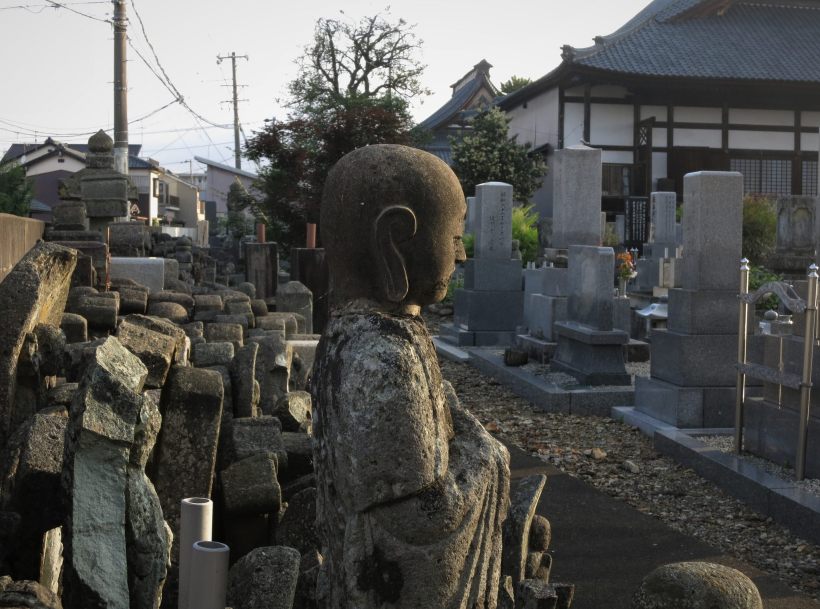
Morning light on grave marker at Daihou-ji, Echizen City, Japan
Setting off with camera in hand and only a general circuit or destination in mind, and without fixed time limits, my eye fixes on wondrous light falling on the scenes that present themselves in the landscape or streetscape; or maybe I am drawn to the signs of time passing (poetic intimations of mortality) and people’s efforts purposing some kind of significance or response to the call of responsibility – the features of the cultural landscape. Traces of the past seem relatively infrequent in Japan, where businesses and residences are meant to serve an active span of years and then are either left to dereliction or razed for a fresh generation to make its own mark on the same ground. So there is a small thrill of discovery when a relic of the earlier society and worldview comes into view. By passing along narrow lanes, or the premodern roads not built in ruler-straight lines there is a faint smell of earlier times to discover, particularly in the twilight that comes before and after full light of day.
A similar thrill of discovery comes from seeing the plants and animals doing what they do in each season, mostly without reference to the lives of humans that clutter up the space and time occupied by these creatures. For example, seeing small birds gathering materials for nest building, or seeing the big water-wading birds settling onto their large tree-top nests is worth stopping to admire. Watching for flowers about to bloom, animals following their life cycle, and by looking out for traces of the past all draw one’s attention away from the ordinary haste of the all-surrounding consumer worldview of purchase, consume, discard with kudos for finding lowest per unit price or bulk buying.
The other vision that takes one outside the normal routines and habits is to view the passing scenes on the day’s circuit with the eye of a cultural detective, reading the cultural landscape to see what recently (or long ago) occurred in a place, whether it is tending a garden or field, pruning the woodlot along a mountain side, or tidying graves during the equinox holiday. All of these ways of seeing and reading the surrounding locations come about by setting a course outside one’s usual route, taken to be the most expedient in the working framework of one’s weeks and years. Rather than having a deadline, time schedule, and destination at some distance from the starting point, let the wandering of the “boulevardier” or “flaneur” be the standard to follow; let the passing scenes themselves be a sort-of cinematic feast of circumstances that move from one view to the next. Let the excursion itself be the purpose or destination; not to arrive at a fixed location, other than to return to one’s beginning place. That way the delight of the moment, the thrill of discovery, and the satisfaction of adding more and more puzzle pieces to one’s map of the wider area being explored can be fully enjoyed as a kind of psychological “flow,” immersing one in the mode of play rather than work; enjoyable for its own sake, not something to be dispensed with in order to reach some other destination. Taking along a camera or two helps to make a trail of breadcrumbs so that one can retrace the steps later with still another kind of vision, the seeing of hindsight.
